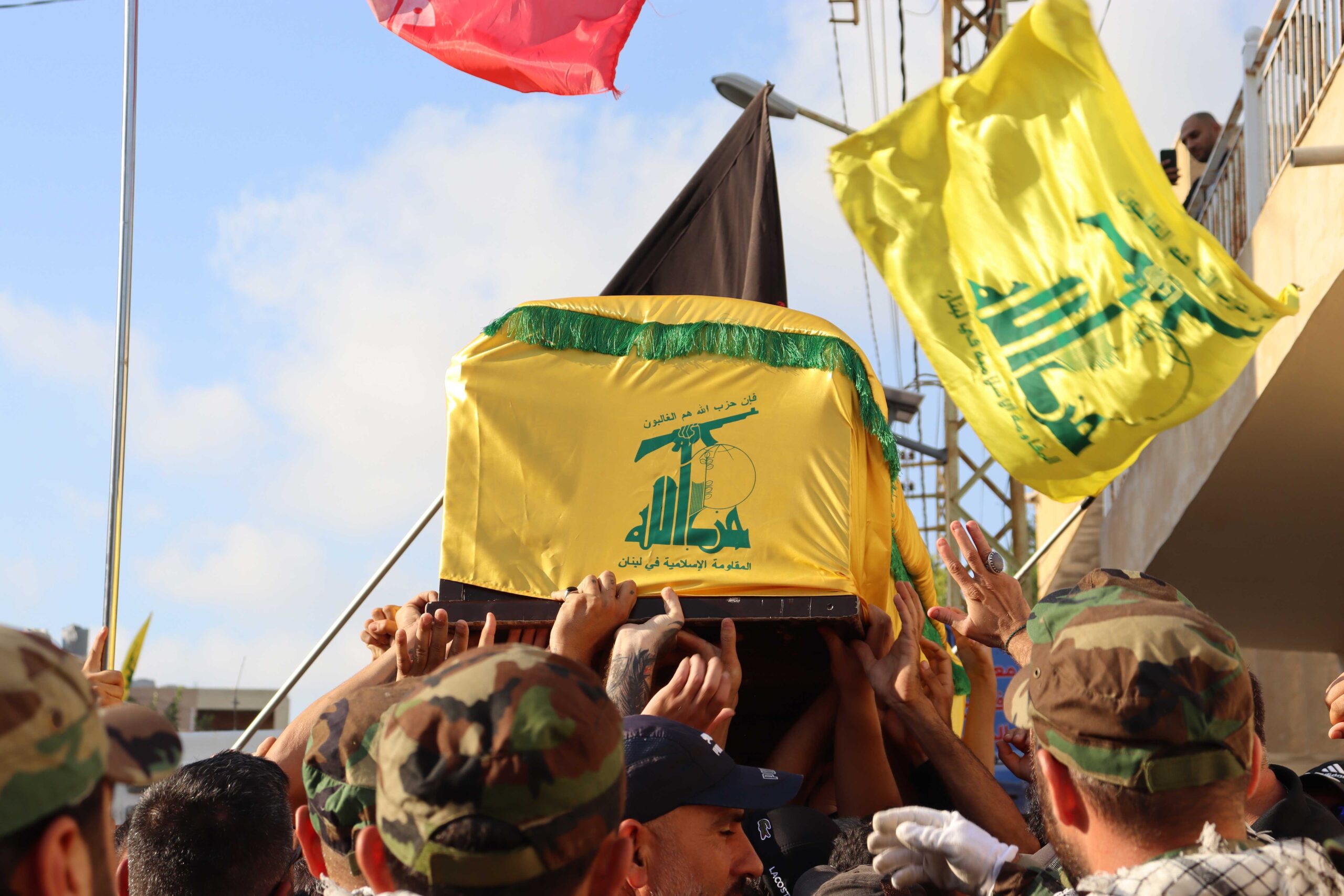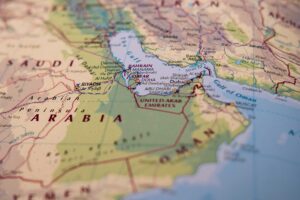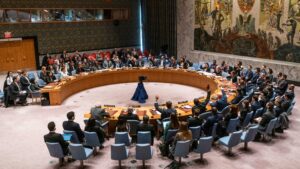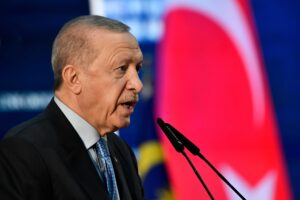Following the last war between Hezbollah and Israel in 2006 that left 1,100 Lebanese and 160 Israelis dead, and thousands more injured, the border between Israel and Lebanon remained relatively calm for around 17 years. However, since the Gaza war started in October 2023, Hezbollah and Israel have exchanged fire along the border on a nearly daily basis, with clashes concentrated on southern Lebanon and more recently the Bekaa region on the one hand, and northern Israel and the Golan Heights on the other hand.
During the past ten months, hostilities between Hezbollah and Israel intensified in parallel with the intensification of the war between Israel and Hamas, but both sides are trying to avoid a full-scale war. Indeed, Hezbollah has claimed that its attacks and their intensity are directly related to the war in Gaza, which means that the continuation of the war and any Israeli escalation against Hamas are met with an increase in the scope of Hezbollah’s attacks. Whenever foreign mediators, including those from the United States, try to urge Hezbollah for restraint, the latter stresses that this is linked to a cease-fire in Gaza. Hezbollah has claimed that its daily attacks helped reduce the number of Israeli soldiers in the Gaza Strip[i] and thus relieved some pressure from Hamas. More than 600 people in Lebanon[ii], mostly Hezbollah fighters, over a hundred civilians and at least 45 Israelis died as a result of the hostilities between Hezbollah and Israel.[iii]
When Hezbollah first entered the conflict between Israel and Hamas on 8th October[iv], the party mainly focused on targeting Israeli military positions close to the border with rockets and artillery fire. Meanwhile, Israel replied by attacking Hezbollah targets in Lebanese border villages such as Aita al-Shaab and Aitaroun.
In November, after losing dozens of fighters, Hezbollah started using its own drones while shooting down Israeli ones in a bid to reduce casualties.[v] It was at that time that Israel started carrying deep strikes in Lebanon, breaking its rules of engagement present since October. On 11th November, for instance, an Israeli drone targeted a truck in Zahrani, 40 kilometres (25 miles) away from the Lebanese-Israeli border.[vi] Around the same time, Hezbollah started using Burkan and Katyusha rockets against Israel which have explosive loads ranging from 300 to 500 kilograms.[vii]
The hostilities became more intense and involved new regions in January and February 2024, concurrent with Hezbollah’s use of Falaq missiles, a weapon developed by Iran’s Aerospace Industries Organization[viii], and Israel’s targeting of Hezbollah’s air defense systems in the city of Baalbek, a Hezbollah stronghold in the Bekaa Governorate.[ix] It is worth noting that Israel often took aim at Baalbek directly after Hezbollah’s successes at taking down Israeli drones. Some of Israel’s deep strikes reached areas that are 100 kilometres (62 miles) from the Lebanese-Israeli border.
Matching Israeli strategies, Hezbollah carried out a deep drone attack on a surveillance system used by the Israeli Air Force at a military base west of Israel’s Tiberias[x], about 35 kilometres (22 miles) from the Lebanese border. Moreover, Hezbollah carried out its first-ever airstrike on Israel as one of its drones equipped with S5 air-to-surface missiles targeted an Israeli site in the Israeli village of Metula. Hezbollah’s boldness increased as the party started launching anti-aircraft missiles at Israeli warplanes[xi], pushing them to retreat beyond the border.
Hezbollah uniquely started engaging in psychological warfare in parallel with its military attacks, releasing drone footage of strategic locations inside Israel, including the city of Haifa[xii], which is 27 kilometres (17 miles) from the Lebanese border, and the Golan Heights.[xiii] These videos aimed to showcase sites Hezbollah could potentially target in case of a full-scale war.
Escalating attacks
On 27th July, an attack killed 12 children in the village of Majdal Shams in the Golan Heights[xiv], prompting heavy Israeli retaliation. Three days after the Majdal Shams attack, Israel struck the southern suburbs of Beirut[xv], killing top Hezbollah commander Fouad Shukr as well as civilians. Hezbollah denied responsibility for the Majdal Shams attack, but the events marked a shift in the course of the fighting.
In addition to Shukr, Israel assassinated other prominent Hezbollah leaders in drone strikes, including top commanders Taleb Abdallah[xvi] and Mohammed Nasser[xvii] in June and July. In response to the assassinations of Abdallah and Nasser, Hezbollah launched hundreds of rockets and dozens of drones on Israel.[xviii]
In August, Israel escalated its attacks against Hezbollah further as it used bunker-piercing bombs for the first time while striking a village in southern Lebanon.[xix] Israel also bombarded Hezbollah’s weapons storage facilities in the Bekaa[xx] in an attack that also killed ten Syrian civilians.[xxi] Hezbollah’s most prominent attacks in August included the targeting of Israel’s Tsnobar logistics base in the Golan Heights[xxii] and the Amiad base[xxiii], north of the Sea of Galilee, with Katyusha rockets and drones respectively. Both bases are located more than 15 kilometres (9 miles) away from the border.
On Sunday, Israel claimed that it launched “preemptive” strikes in Southern Lebanon and destroyed “thousands of rocket launchers.”[xxiv] Directly after that, Hezbollah retaliated in response to killing of Shukur.[xxv] According to Hezbollah Secretary-General Hassan Nasrallah, they “targeted the Gilot military intelligence base near Tel Aviv.” As part of the attack, 320 rockets and drones were first fired at several Israeli positions in northern Israel to facilitate the main attack on the base near Tel Aviv, according to the group. However, the Israel Defense Forces (IDF) refuted claims that a base was attacked in central Israel. If Israel succeeded in foiling Hezbollah’s attack, it could mean that the group’s goal of achieving deterrence by matching the nature and intensity of Israeli attacks following the Beirut strike has failed.
Despite the gradual escalation of hostilities, full-scale war has not broken out between Israel and Hezbollah. The United States and France have been among the primary international actors labouring to prevent such a war and trying to find a diplomatic solution to the existing conflict. US envoy Amos Hochstein has visited Beirut and Tel Aviv[xxvi] and met with officials from both countries several times to prevent a broadening of the conflict. In parallel with this, the United States bolstered its presence in the Middle East[xxvii], ordering aircraft carriers, a guided missile submarine and destroyers to the East Mediterranean following the increase in tensions.
Perhaps even more important than external restraining factors is that Israel and Hezbollah both have a lot at stake in case a war breaks out. Lebanon has been suffering from an economic crisis since 2019[xxviii], rendering the consequences of a war catastrophic for the country with a large part of the Lebanese population likely to blame Hezbollah for it. Strategically, Lebanon is at high risk as the country imports most of its goods. In a war, Israel could paralyze the country’s port and airport and halt imports as a result, swiftly increasing the population’s pressure on Hezbollah.
On the other hand, Israel is not without apprehensions of its own. The fact that the death of a dozen children in Majdal Shams did not bring about a much more severe escalation on Israel’s side is one apparent factor in support of this assessment. There are other, strategic reasons too, most notably the IDF’s fight against Hamas in Gaza for more than ten months – an operation that has consumed significant resources but one that has not yet accomplished its goals fully. Recent news that six Israeli hostages who Hamas abducted in October have been found dead in a tunnel in Gaza also attracted one of the largest protests against the government’s wartime policies in Israel, demanding an immediate ceasefire.[xxix]
Hezbollah can also cause significant destruction to Israeli cities, including Tel Aviv, and Israel’s Iron Dome has proven over the past few months that it cannot always intercept Hezbollah’s rockets successfully.[xxx] A single rocket meeting its target in a big city could significantly increase the number of casualties on Israel’s side.
Hezbollah’s military capabilities are not to be underestimated either. Analysts estimated that the group could have amassed up to 150,000 rockets in Lebanon, “including guided and unguided rockets, antitank artillery, and ballistic and anti-ship missiles.”[xxxi] The Washington Post estimated that this is four times as many as what Hamas owned before the war in Gaza erupted.
Ongoing cease-fire negotiations between Hamas and Israel face significant challenges[xxxii]; both sides still have contradictory positions regarding major elements of a deal, such as the presence of Israeli forces at the Philadelphi and Netzarim corridors and the Rafah crossing in the Gaza Strip.
Meanwhile, Israel’s government is experiencing increasing domestic pressure to achieve the return of hostages as well as thousands of Israelis who left their homes due to Hezbollah’s attacks in the north of the country.[xxxiii] This is only possible through a long-term solution that leads through developments in Gaza.
After more than ten months of destructive war in the Gaza Strip, security risks for the region are still at a high. Exchanges between Israel and Hezbollah are viewed with extreme caution by foreign policymakers as the expansion of the war could potentially draw in the entire region with Iran and its Syria, Iraq and Yemen-based proxy groups on the ready.
[i] Al-Sharq Al-Awsat (2023). “Nasrallah on the ‘Al-Aqsa flood’”, 3 November 2023, retrieved from:نصر الله: قرار «طوفان الأقصى» فلسطيني 100% (aawsat.com).
[ii] BBC News (2024). “Hezbollah attacks two Israeli military sites in the occupied Golan with a ‘heavy barrage of rockets’ in response to an Israeli attack”, 19 August 2024, retrieved from: https://www.bbc.com/arabic/articles/cdrl3z24jkeo.
[iii] Sky News Arabia (2024). “After Hezbollah attack, Israel announces the death of a soldier on the northern front”, August 2024, retrieved from: بعد هجوم حزب الله.. إسرائيل تعلن مقتل جندي بالجبهة الشمالية | سكاي نيوز عربية (skynewsarabia.com).
[v] AA (2023). “Lebanese Hezbollah announces the downing of an Israeli march”, November 2023, retrieved from: “حزب الله” اللبناني يعلن إسقاط مسيرة إسرائيلية (aa.com.tr).
[vi] Al-Modon (2023). “Israel targets truck in Zahrani, Hezbollah ‘vehicle’ operations”, November 2023, retrieved from: اسرائيل تستهدف شاحنة في الزهراني وعمليات “مركّبة” لحزب الله (almodon.com).
[vii] Al-Sharq al-Awsat (2024). “What weapons does Lebanese Hezbollah have?”, June 2024, retrieved from: ما هي الأسلحة التي يمتلكها «حزب الله» اللبناني؟ (aawsat.com).
[viii] Tayyar (2024). “The specifications of the Falaq 1 missile”, January 2024, retrieved from: https://www.tayyar.org/News/Lebanon/583364/.
[ix] Nida al-Watan (2024). “Israeli strike on Baalbek for the first time”, February 2024, retrieved from: بالفيديو والصور: ضربة إسرائيلية على بعلبك للمرة الأولى | نداء الوطن (nidaalwatan.com).
[x] Sky News Arabia (2024). “Hezbollah launches drones at military base west of Tiberias”, May 2024, retrieved from: حزب الله يطلق مسيّرات على قاعدة عسكرية غربي طبريا | سكاي نيوز عربية (skynewsarabia.com).
[xi] Sky News Arabia (2024). “For the first time since the start of the war, Hezbollah targets Israeli fighters”, June 2024, retrieved from: لأول مرة منذ بدء الحرب.. حزب الله يستهدف مقاتلات إسرائيلية | سكاي نيوز عربية (skynewsarabia.com).
[xii] Sky News Arabia (2024). “Hezbollah publishes video of air surveillance operation of sensitive areas in Haifa”, June 2024, retrieved from: حزب الله ينشر فيديو لعملية مراقبة جوية لمناطق حساسة في حيفا | سكاي نيوز عربية (skynewsarabia.com).
[xiii] Al Jazeera (2024). “Hezbollah publishes footage of Israeli military bases in the Golan”, July 2024, retrieved from: “الهدهد 2”.. حزب الله ينشر مشاهد لقواعد عسكرية إسرائيلية بالجولان | أخبار | الجزيرة نت (aljazeera.net).
[xiv] Al Jazeera (2024). “Majdal Shams death toll rises, Netanyahu vows Hezbollah will ‘pay heavy price’”, July 2024, retrieved from: ارتفاع حصيلة قتلى مجدل شمس ونتنياهو يتوعد حزب الله “بدفع ثمن باهظ” | أخبار | الجزيرة نت (aljazeera.net).
[xv] BBC News (2024). “Details of targeting a senior Hezbollah leaders in the southern suburb of Beirut”, July 2024, retrieved from: فؤاد شكر.. تفاصيل استهداف القيادي الكبير في حزب الله بالضاحية الجنوبية لبيروت – BBC News عربي.
[xvi] Al Arabiya (2024). “Who is Abu Taleb, Hezbollah leader?”, June 2024, أقسى اغتيال منذ أكتوبر.. من هو أبو طالب قيادي حزب الله؟ (alarabiya.net).
[xvii] France24 (2024). “Who was Mohammad Nasser, Hezbollah field commander killed in an Israeli strike”, July 2024, retrieved from: من هو محمد ناصر القائد الميداني في حزب الله الذي قتل في ضربة إسرائيلية؟ (france24.com).
[xviii] AA (2024). “Hezbollah fires missiles and drones at Israeli bases and barracks”, July 2024, retrieved from: “حزب الله” يطلق صواريخ ومسيرات على قواعد وثكنات إسرائيلية (aa.com.tr).
[xix] El Nashra (2024). “Israeli media on Kfar Kila raid”, August 2024, retrieved from: وسائل إعلام إسرائيلية عن غارة كفركلا: سلاح الجو استخدم قنابل خارقة للتحصينات لأول مرة منذ بداية الحرب (elnashra.com).
[xx] Al-Sharq Al-Awsat (2024). “Hezbollah weapons deposit hit… A major Israeli intelligence breach”, August 2024, retrieved from: ضرب مخازن أسلحة «حزب الله»… خرق استخباراتي إسرائيلي كبير (aawsat.com).
[xxi] CNN Arabic (2024). “10 Syrians killed in Israeli raid on Nabatieh”, August 2024, retrieved from: الصحة اللبنانية: مقتل 10 سوريين في الغارة الإسرائيلية على النبطية.. والجيش الإسرائيلي يعلق – CNN Arabic.
[xxii] El Nashra (2024). “Hezbollah: We bombed the Tsnobar base in the Golan”, August 2024, retrieved from: حزب الله: قصفنا قاعدة تسنوبار اللوجستية في الجولان بصواريخ كاتيوشا ردا على الاعتداء الذي طال منطقة البقاع (elnashra.com).
[xxiii] Lebanon Debate (2024). “Hezbollah airstrike on ‘Amiad’”, August 2024, retrieved from: هجوم جوي لحزب الله على “عميعاد” (lebanondebate.com).
[xxiv] AA (2024). “Israel announces a ‘preemptive’ attack on Lebanon”, August 2024, retrieved from: إسرائيل تعلن تنفيذ هجوم “استباقي” ضد لبنان (aa.com.tr).
[xxv] Al Jazeera (2024). “Nasrallah reveals the Israeli target and denies Tel Aviv’s allegations”, August 2024, retrieved from: نصر الله يكشف الهدف النوعي الإسرائيلي ويكذّب مزاعم تل أبيب | أخبار | الجزيرة نت (aljazeera.net).
[xxvi] Al Nashra (2024). “Hochstein is in contact with Lebanon and Israel to prevent escalation”, July 2024, retrieved from: النشرة: هوكشتين يقوم بإتصالات مع لبنان وإسرائيل لمنع التصعيد (elnashra.com).
[xxvii] Al Jazeera (2024). “Second US aircraft carrier arrives in Middle East”, August 2024, retrieved from: حاملة طائرات أميركية ثانية تصل إلى الشرق الأوسط | أخبار | الجزيرة نت (aljazeera.net).
[xxviii] Sky News Arabia (2023). “Does Lebanon’s economy have the wherewithal to withstand a new war?”, October 2023, retrieved from: هل يملك اقتصاد لبنان مقومات الصمود أمام حرب جديدة؟ | سكاي نيوز عربية (skynewsarabia.com).
[xxx] Al Jazeera (2024). “Why did the Iron Dome fail to detect Hezbollah’s march and missiles?”, April 2024, retrieved from: لماذا فشلت القبة الحديدية برصد مسيرة وصواريخ حزب الله في عرب العرامشة؟ | أخبار البرامج | الجزيرة نت (aljazeera.net).
[xxxii] CNN Arabic (2024). “Ceasefire negotiations in Gaza”, August 2024, retrieved from: مفاوضات وقف إطلاق النار في غزة.. هذه أهم العقبات أمام التوصل لاتفاق – CNN Arabic.
[xxxiii] Al Jazeera (2024). “100,000 Israelis were displaced by the war, and some of them do not want to return to the border areas”, April 2024, retrieved from: 100 ألف إسرائيلي نزحوا بالحرب وبعضهم لا يريد العودة للمناطق الحدودية | أخبار | الجزيرة نت (aljazeera.net).

















